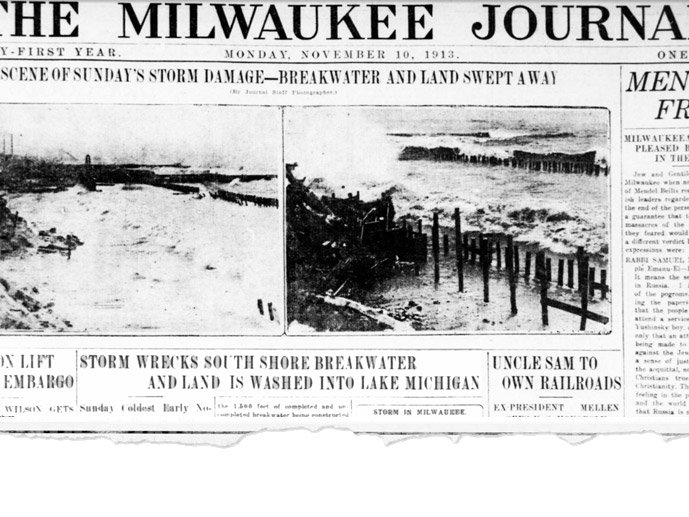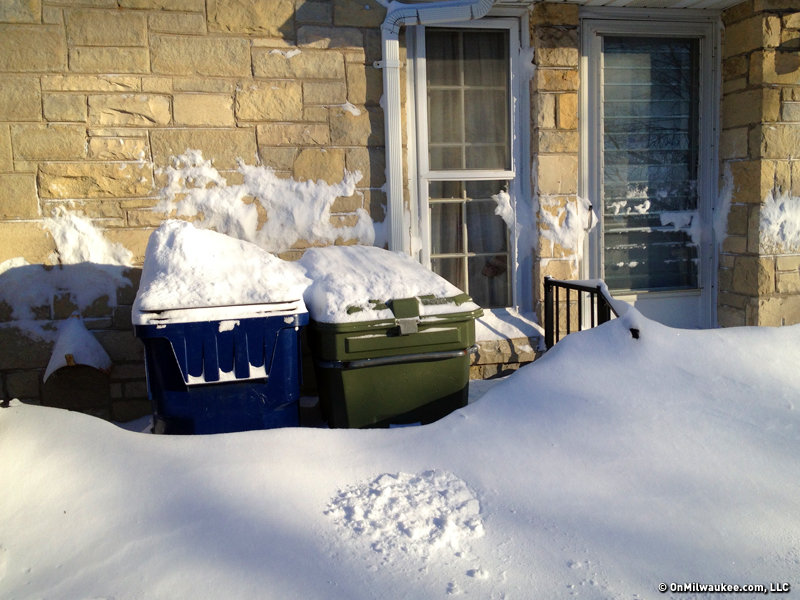It’s fun to complain and get worked up about the weather. Especially in the age of social media, "snowmaggedons" are a viral, shared experience … and in the last year, we’ve had plenty to talk about it, too.
It’s starting early this year. With temperatures plunging this week, people are pre-complaining about a new polar vortex, even though that’s not what’s going on.
Can you imagine, though, how social media would’ve melted down exactly 101 years ago? Nov. 11, 2013 was the end of the "Big Blow," the "Freshwater Fury" or the "White Hurricane," a hurricane-force blizzard that killed more than 250 people and and destroyed 19 ships.
I knew nothing of this storm until my office neighbor, Steve Palec, brought it up. This "November Witch" sounded insane, and there were no hashtags to describe it. Observers – presumably there was no round-the-clock storm team squawking on AM radio back then – first noticed the storm on Nov. 6 on the western side of Lake Superior. The Detroit News forecast "moderately brisk" winds that day. On Nov. 7, the Port Huron Times-Herald upgraded the storm to "moderately severe." Coast Guard stations raised signal flags with a sequence of red, white and red lanterns, which meant that hurricane winds were moving alongside a blizzard.
The Nov. 10, 1913 Milwaukee Journal gave a short forecast that didn’t seem to jive with the emergency state of affairs: "Breakwater and pile drivers wrecked on South Shore. Sections of the lake shore bluff washed away. Coldest early November day in many years. Velocity of wind, twenty-five miles an hour. Snow expected."
Snow expected, indeed.
Over the next few days, the lake effect blizzard dumped incredible weather on the midwest. The Milwaukee harbor lost its entire south breakwater and much of the surrounding South Shore Park area in Bay View that had been recently renovated. Cleveland saw six foot snow drifts, stranding passengers in their powerless streetcars for two nights. With waves as high as 35 feet, ships wrecked all across the Great Lakes – a fully loaded ore carrier capsized and floated upside down on the eastern coast of Michigan before eventually sinking.
On ships alone, the Big Blow accounted for $5 million in financial damages, which with about $120 million in today’s dollars, and shore damages were never accounted for. That’s were most of the fatalities occurred, too. On the upside, the USDA Weather Bureau began taking storms more seriously, and shipbuilders started making boats stronger. Of the 12 ships that sank in the storm, four have never been found.
Our Bobby Tanzilo spoke to author, Michael Schumacher, who wrote "November's Fury: The Deadly Great Lakes Hurricane of 1913." He said:
"The enormous waves destroyed a couple of pile drivers near a breakwater project, and ripped up 1,500 feet of construction. It was even worse in Chicago. Two men were picked up by the wind, tossed into the Chicago River, and drowned. Lake Shore Drive was flooded, and a project at Lincoln Park, already eight years in the making, was washed away. On the lake itself, boats were tossed around and the storm's first casualty, the Louisiana, a wooden steamer, was lost after grounding near the Door Peninsula's Washington Island and catching fire. Fortunately, nobody was lost or seriously injured."

So, I wonder if we’d be better off today, with our 24/7 weather focused-news and social media coverage. As much as I poke fun at it, I have to think yes.
I mean, this was front-page new of the Milwaukee Journal on Nov. 11, 1913, but it wasn’t the lead story, despite this amazing headline: TERRIFIC STORM SPREADS DEATH AND SUFFERING: Cleveland Faces Famine, Unable to Bury Dead, Flood May Follow."
But it didn’t get any ink until Nov. 9, best I can tell, and that wasn’t focused on what was to come in Milwaukee. If this storm was a huge deal, you wouldn’t know it from reading the Journal.
But media is no longer a sermon, it’s a conversation, and we can all be part of the story. Do we all get a little too excited about severe weather? Maybe, but in the end, our ability to share it makes us all a little safer, too.
Andy is the president, publisher and founder of OnMilwaukee. He returned to Milwaukee in 1996 after living on the East Coast for nine years, where he wrote for The Dallas Morning News Washington Bureau and worked in the White House Office of Communications. He was also Associate Editor of The GW Hatchet, his college newspaper at The George Washington University.
Before launching OnMilwaukee.com in 1998 at age 23, he worked in public relations for two Milwaukee firms, most of the time daydreaming about starting his own publication.
Hobbies include running when he finds the time, fixing the rust on his '75 MGB, mowing the lawn at his cottage in the Northwoods, and making an annual pilgrimage to Phoenix for Brewers Spring Training.







